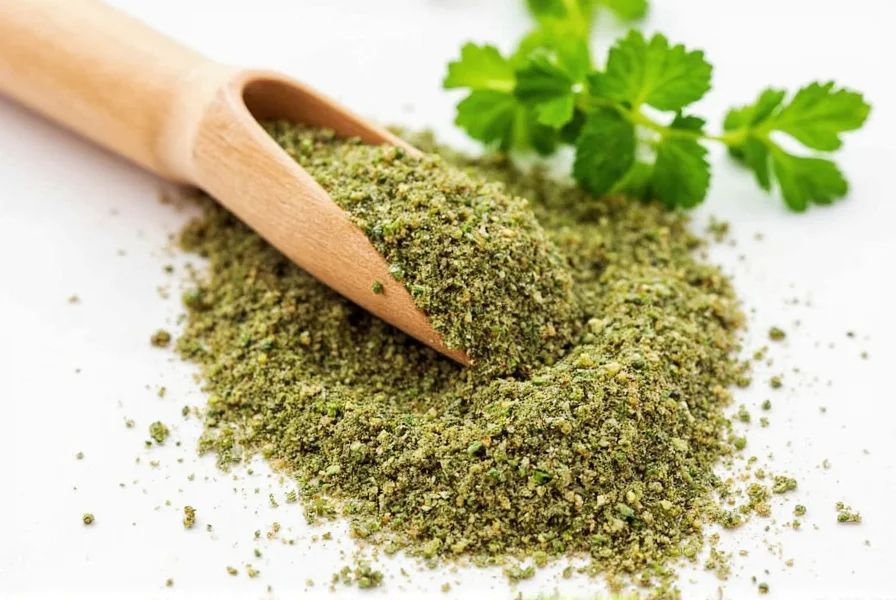When your recipe calls for coriander spice and your pantry comes up empty, knowing reliable alternatives prevents cooking disasters. Coriander seeds (ground into powder) provide a distinctive citrusy, floral note with subtle warmth that’s essential in Indian, Middle Eastern, and Latin American cuisines. Understanding proper substitutions maintains recipe integrity while accommodating ingredient limitations.
What Is Coriander Spice and Why Substitutions Matter
Coriander spice refers specifically to dried Coriandrum sativum seeds—not to be confused with fresh cilantro leaves, though they come from the same plant. The ground form delivers warm, lemony notes with hints of sage and floral complexity. When substituting, consider whether your recipe requires:
- Ground coriander (most common in spice blends)
- Whole coriander seeds (for pickling or tempering)
- Fresh cilantro (a completely different flavor profile)
Incorrect substitutions often result in overpowering dishes or missing flavor dimensions. The right alternative preserves the recipe’s intended balance while working with available ingredients.
Top 5 Coriander Spice Substitutes Ranked by Effectiveness
| Substitute | Flavor Comparison | Best For | Conversion Ratio | Limitations |
|---|---|---|---|---|
| Cumin | Earthier, smokier, less citrus | Curries, stews, chili | 1:1 | Overpowers delicate dishes |
| Garam Masala | Complex blend with coriander base | Indian recipes | 1:1.5 | Contains other spices that alter flavor |
| Caraway Seeds | Similar citrus notes, more anise-like | Rye bread, sauerkraut, European dishes | 1:0.75 | Stronger licorice flavor |
| Curry Powder | Contains coriander plus turmeric, cumin | Quick substitutions in curries | 1:1.25 | Color and flavor altered by turmeric |
| Fennel Seeds | Milder, sweeter anise notes | Fish dishes, light sauces | 1:0.5 | Lacks earthy depth of coriander |
Detailed Substitute Analysis
Cumin: The Savory Stand-In
When seeking a coriander spice substitute for curry, cumin provides the closest earthy foundation. While lacking coriander’s citrus notes, its warm, nutty profile complements similar spice blends. Use equal parts cumin for ground coriander in bean dishes, chili, or meat rubs. For delicate recipes like fish curry, reduce cumin by 25% to prevent overpowering flavors. Professional chefs often combine cumin with a pinch of lemon zest to mimic coriander’s bright notes.

Garam Masala: The Ready-Made Solution
This Indian spice blend typically contains 30-50% coriander, making it an effective ground coriander replacement in recipes. Use 1.5 teaspoons garam masala per 1 teaspoon coriander to compensate for additional spices like cardamom and cloves. Ideal for quick substitutions in dal, butter chicken, or vegetable korma. Avoid using in non-Indian dishes as the blend’s complexity alters flavor profiles.
Caraway Seeds: The Citrus Alternative
For recipes requiring coriander vs cumin differences in European cooking, caraway offers similar citrus undertones with more pronounced anise notes. Grind seeds fresh for best results. Works particularly well in rye bread, sauerkraut, and German potato salad. Use 3/4 teaspoon caraway per 1 teaspoon coriander to prevent overwhelming flavors. Not recommended for Indian or Middle Eastern dishes where flavor authenticity matters.
Critical Substitution Considerations
Successful coriander spice substitute measurements depend on three factors:
- Dish type: Indian curries tolerate cumin better than Mexican salsas
- Form required: Whole seeds vs ground have different potency
- Recipe stage: Tempering seeds vs adding ground spice mid-cooking
Never substitute fresh cilantro for ground coriander—they share a plant origin but deliver completely different flavor experiences. Cilantro provides bright, herbal notes while coriander seeds offer warm, citrusy depth. For how to substitute fresh cilantro for ground coriander situations, use 2 tablespoons chopped cilantro per 1 teaspoon ground coriander, but recognize this fundamentally changes the dish’s character.
Avoid These Common Substitution Mistakes
Many home cooks make these critical errors when seeking a best alternative to coriander seeds:
- Using equal parts cumin in delicate fish dishes (reduces to 3/4 strength)
- Substituting whole coriander seeds for ground without adjusting quantities (use 1.25x more whole seeds)
- Ignoring regional recipe requirements (caraway works in European but not Indian cuisine)
- Overcompensating with lemon (citrus should complement, not dominate)

When Substitutions Won’t Work
Some recipes absolutely require authentic coriander. Avoid substitutions in:
- Dhaniwal korma (Pakistani cilantro-based curry)
- Beef rendang (Indonesian slow-cooked curry)
- Coriander-heavy spice blends like berbere
In these cases, visit an international market or order whole seeds online—they store well for 2-3 years when kept in airtight containers away from light. Properly stored coriander maintains flavor integrity far better than improvised substitutes.
Frequently Asked Questions
Can I use cilantro instead of coriander spice in a recipe?
No, fresh cilantro and ground coriander are not interchangeable. They come from the same plant but have completely different flavor profiles. Cilantro provides bright, herbal notes while coriander seeds offer warm, citrusy depth. Use 2 tablespoons chopped cilantro per 1 teaspoon ground coriander only when recipe flexibility allows, recognizing this fundamentally changes the dish.
What’s the best coriander substitute for Indian curry?
Garam masala works best as a coriander spice substitute for curry, using 1.5 teaspoons per 1 teaspoon of coriander. This blend typically contains 30-50% coriander plus complementary spices. For authentic flavor, combine equal parts cumin with a pinch of lemon zest to mimic coriander's citrus notes without overpowering the dish.
How do I substitute whole coriander seeds for ground?
Use 1.25 teaspoons whole coriander seeds for every 1 teaspoon ground coriander. Toast the seeds first in a dry pan until fragrant, then grind them using a spice grinder or mortar and pestle. This maintains the intended flavor concentration since grinding releases more volatile oils than pre-ground spice.
Why does my coriander substitute taste bitter?
Bitterness typically occurs when using too much cumin or caraway as a coriander substitute. Cumin becomes bitter when used beyond 1:1 ratios in delicate dishes. Always start with 25% less substitute than required coriander, then adjust to taste. Toasting spices before use and adding a pinch of sugar can counteract bitterness in finished dishes.











 浙公网安备
33010002000092号
浙公网安备
33010002000092号 浙B2-20120091-4
浙B2-20120091-4